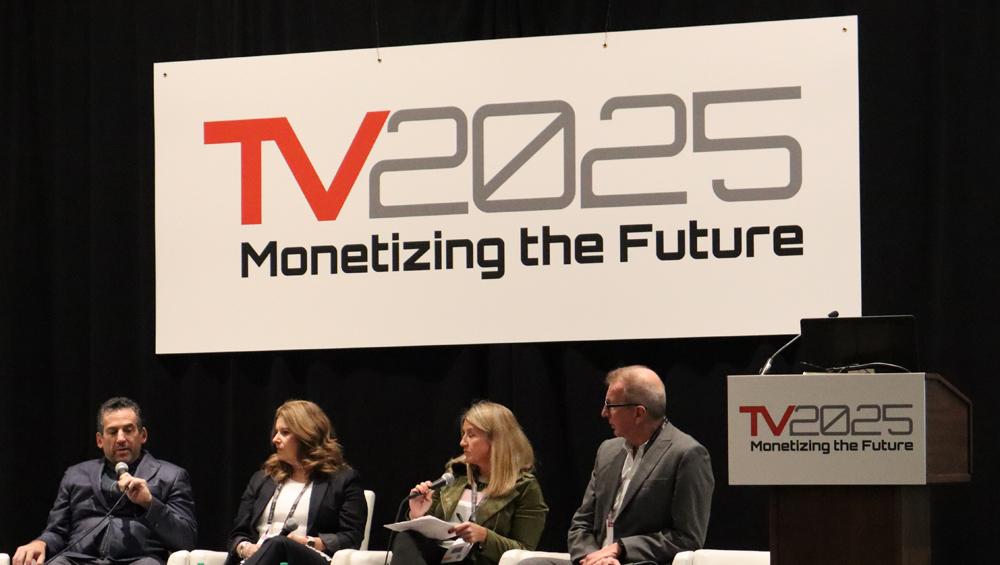
As Broadcasters Seek To Streamline Local Ad Sales, Reach Remains King

 While local station groups are still working out how best to incorporate automation and measurement systems to efficiently execute ad buys across all of their platforms, reach remains broadcasters’ primary advantage. And as the market gets more competitive and more targeted, the opportunity to buy reach becomes scarcer, and thus more valuable.
While local station groups are still working out how best to incorporate automation and measurement systems to efficiently execute ad buys across all of their platforms, reach remains broadcasters’ primary advantage. And as the market gets more competitive and more targeted, the opportunity to buy reach becomes scarcer, and thus more valuable.
That was the consensus of a panel at Wednesday’s TV2025 event, hosted by TVNewsCheck during NAB Show New York.
“I think one thing that digital will never have is reach,” said Phillipe Generali, CEO, Media Monitors, which monitors, measures and analyzes media activity across local markets. “TV is 90% of the people. And that’s what global buyers want — to have reach. Reach is king and that is something that will remain for a long time.”
While that’s good news for the business of broadcasting, there is still much work to be done in many areas to make cross-platform campaigns easy to place, distribute, monitor and measure.
Asked what their most urgent need is in terms of being able to sell advertising effectively across all platforms, whether linear or digital, OTT or web, it’s “systems, it always comes down to systems,” said Rob Weisbord, president of broadcast and chief operating officer of Sinclair Broadcast Group. Sinclair sells advertising across its 185 TV stations, Bally Sports, Tennis Channel, Sinclair One and its diginets, including Stirr, Charge, TBD and Comet TV. “We’re working on a unified platform to bring to the marketplace so we can amalgamate all of our assets to make it easier for the buying community to see as clients.
“I still think that broadcast is the most powerful medium,” Weisbord continued. “That’s why so much money is being spent by the politicians, but the execution for clients has to become easier and it has to be cross-platform. We’ll have all the qualitative data that we need to execute across platforms. But if it’s too arduous of a buying cycle, we won’t be able to capitalize on our opportunities.”
These challenges affect everyone involved in the process, from stations selling time, agencies buying it or brands looking to achieve their marketing goals.
“It’s not just a sales-side or buy-side problem, It’s an industry problem,” said Tracy Chavez, executive vice president, director of investment operations, Publicis. “There has to be parity in the tech that’s created for local activation and investment, or you’ll have one side of the system that is just labor intensive — manually inputting information and that type of thing — and you’ll have another side of the system that isn’t. We need to collaborate and work together.”
Chavez and Weisbord agreed that they have seen the industry come together to develop systems that make the process of buying and delivering cross-platform advertising across local markets somewhat easier. But a big piece of this puzzle is measurement, and getting to a unified currency and an accurate measurement of local viewership — including demographics — still seems like a long way off, Chavez said.
“Measurement [of local TV] has gotten overly complicated and overly unreliable, so finding other forms of measurement is a big initiative,” Chavez said. “It’s exciting that we’re finally really digging into it. I think it’s a very collective collaborative ambition that the industry needs to embrace and do together.”
“Until a measurement company is what I call ‘inside the glass,’ inside the television, there’s going to be such a big standard deviation that I don’t know if I’ll ever sleep comfortably believing whatever comes out,” Weisbord said. “To me, there’s some fabrication that goes on, because you’re running an algorithm and we and the agencies don’t see the algorithm to verify if we believe it is credible.”
That said, broadcasters need to balance their ability to reach large numbers of consumers with their ability to target them.
“Mass reach has been the way it’s been for a reason, because you never know who’s going to change their habits and you want to grab those people while you can,” said Weisbord. “What’s the balance between targeting those consumers you know you can get and the consumer journey for your product to those you haven’t even thought about yet? I think that’s the beauty of it.”
For more TV2025 coverage, click here.
































Comments (0)